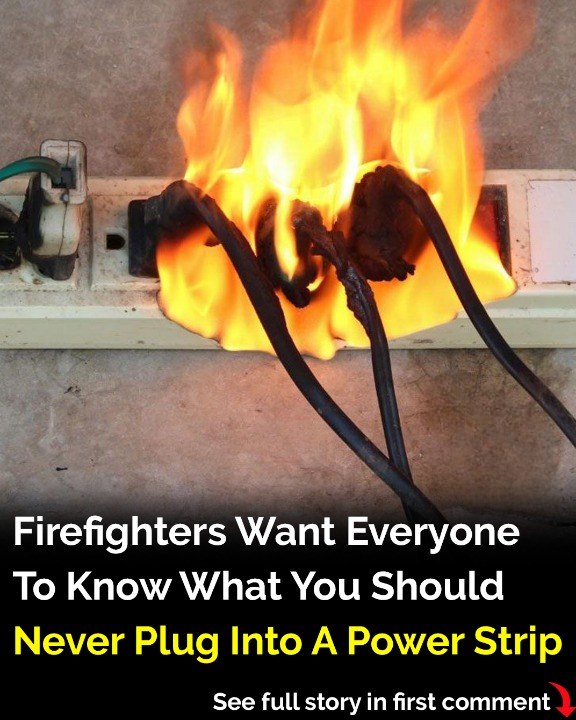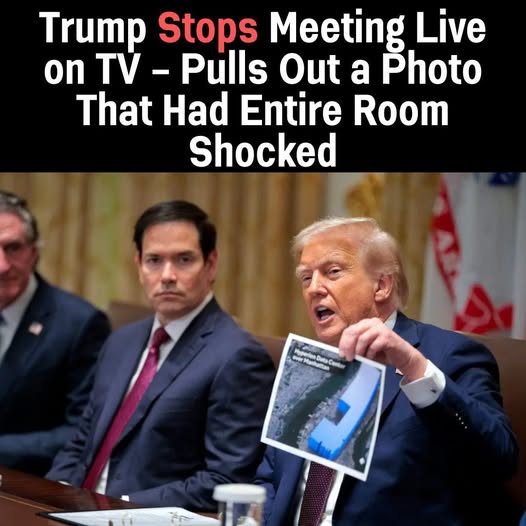As temperatures drop and winter gradually settles in, many households begin pulling out the extra layers, prepping their homes for warmth, and relying on various appliances to stay comfortable. Among these tools, space heaters are one of the most commonly used. They offer quick, direct warmth and can help reduce heating costs when used responsibly. However, with their convenience comes an important set of safety considerations that every household should understand.
In recent years, firefighters and safety organizations have repeatedly emphasized one message: certain appliances—especially space heaters—should never be plugged into power strips or extension cords. While a power strip may seem like a harmless accessory, it can become a major hazard when used incorrectly.
This expanded guide explores why this rule matters, what can go wrong when the wrong devices are connected, and how to keep your home safe throughout the colder season. The goal is to provide helpful, practical, and reliable safety information that protects homes, families, and communities.
Why Power Strips Aren’t Designed for High-Demand Devices
Power strips are incredibly useful for everyday electronics. They make it easy to organize multiple low-energy devices such as phone chargers, lamps, or laptop adapters. These small items draw minimal electricity, and a typical power strip can handle that load without any problems.
However, high-wattage appliances—like space heaters, microwave ovens, portable air conditioners, mini fridges, or irons—operate very differently. These devices require a significant amount of power to function, far more than what a basic power strip is built to handle. When a device like a space heater draws more current than a strip or extension cord is rated for, the extra electrical load can cause the strip to heat up quickly.
Overheating at an outlet or strip is not only damaging to the device—it can become a serious hazard. Firefighters across the country have shared examples of burned cords, melted plastic housings, and scorched outlets resulting from simple misuse. The core issue is not the space heater itself but rather the inappropriate connection method.
A wall outlet is designed to handle the energy demands of the heater. A power strip is not.
A Long-Standing Warning From Fire Departments
Fire departments nationwide have tried for years to raise awareness about this issue. One of the most circulated reminders came from the Umatilla County Fire District #1 in Oregon, which shared a message illustrating why connecting a heater to a power strip is risky. While the post was made several years ago, its relevance has not faded. Each winter season brings new reminders that these cautions are still necessary.
Their point was simple: power strips are not engineered to support the level of electricity required by heating appliances. When pushed beyond their limits, they can heat up rapidly. That heat can damage the strip, compromise wiring, or affect nearby materials.
The message circulated widely because so many people recognized the importance of the reminder. Many individuals even shared personal experiences, noting moments when they only avoided a dangerous situation because they happened to notice the problem quickly. These stories underline the fact that real-world incidents do occur, and awareness can make a meaningful difference.
How Space Heaters Work — And Why They Require Extra Caution
Space heaters function by converting electrical energy into heat, often reaching temperatures far higher than most people realize. Depending on the model, internal components may reach several hundred degrees. This capability is what makes them so effective at warming small areas—but it is also what makes careful usage essential.
Most space heaters draw around 1,500 watts of power. This level of demand is high enough that manufacturers specifically instruct consumers to plug heaters directly into wall outlets. When used appropriately, heaters can operate safely. Problems arise when they are plugged into devices that cannot manage the load, such as:
- Power strips
- Extension cords
- Multi-outlet adapters
- Older or damaged wall outlets
Using the wrong connector not only stresses the wiring but also increases the chance of unnoticed overheating.
Understanding the Risks of Overloading Electrical Components
Every electrical component—from cords to outlets—has a maximum amount of power it can safely handle. A standard power strip often supports between 800 and 1200 watts in total. Since most space heaters exceed this range, the strip can overheat in a surprisingly short period of time.
What makes the situation more concerning is that overheating happens internally. A power strip may appear normal on the outside even while its internal components are becoming too hot. In some cases, the damage becomes noticeable only when the plastic casing begins to deform or discolor. At that point, the strip is no longer safe for any use.
Because this kind of internal overheating does not always produce obvious early signs, the safest approach is simply to avoid using power strips for high-demand appliances entirely.
Unattended Heaters: Another Common Cause of Household Incidents
Another important factor emphasized by fire safety professionals is the risk of leaving a heater unattended. Many winter-related incidents occur when individuals leave the room or fall asleep while the heater continues running. Even a well-maintained heater plugged directly into an appropriate outlet should not be left on when no one is present.
The combination of an unattended heater and an overloaded power strip or extension cord significantly increases risk. The added heat from the heater and the electrical heat from the overloaded strip create a dangerous situation that can escalate quickly.
Simple awareness—turning off devices when leaving a room—helps prevent many incidents before they begin.
Statistics Highlight the Importance of Safe Heater Use
National safety organizations have monitored these issues for years and have shared valuable data that illustrates just how important proper heater usage is. The National Fire Protection Association (NFPA) has reported that heating equipment represents a major portion of winter household incidents. While thousands of cases are recorded each year, the majority of them are preventable with proper precautions.
Between 2009 and 2013, for example, heating-related events caused substantial damage nationwide. A significant portion of these incidents happened during the coldest months—December, January, and February—when heaters are used most frequently.
Among all types of heating equipment, portable space heaters are consistently linked to a large share of the problems. This is not because heaters are inherently unsafe, but because they are often used in ways that exceed electrical limitations or compromise safety guidelines.
These statistics help reinforce a simple truth: informed, cautious use of heating appliances reduces risks dramatically.
Guidelines Recommended by Electrical Safety Experts
Several safety organizations, including the Electrical Safety Foundation International (ESFI), offer clear recommendations for using space heaters responsibly. These guidelines are designed to be simple, practical, and easy to apply in everyday situations. They include the following:
1. Turn Off Heaters When Leaving the Room
Even a brief absence can create risks, especially if something shifts, falls over, or overheats. Turning the heater off before leaving prevents unwanted situations.
2. Maintain a Safe Distance
A space heater should always have at least three feet of empty space surrounding it. This prevents nearby materials from becoming too warm.
3. Plug Heaters Directly Into Wall Outlets
This is one of the most important rules. Heaters should not share outlets with other appliances and should never be connected to strips, cords, or similar devices.
4. Keep Smoke Alarms Functional
Every home should have smoke alarms installed on every level and near sleeping areas. Monthly testing ensures they continue to function properly.
5. Use Stable, Flat Surfaces
Placing a heater on a steady, level surface helps ensure it stays upright and operates safely. Furniture, countertops, or soft surfaces like beds or carpets can contribute to instability.
Following these guidelines keeps space heaters functioning as intended while minimizing risks.
Power Strips and Extension Cords: What They Are Designed For
To better understand why a space heater should not be plugged into a power strip, it helps to consider what power strips are actually built for. Their purpose is to distribute power for lightweight electronics, not to serve as a substitute for a wall outlet for high-demand appliances.
Typical safe uses for power strips include:
- Phone or tablet chargers
- Laptop computers
- Desk lamps
- Clocks
- Small fans
- Printers
- Routers or modems
All these devices draw low amounts of electricity. When used properly, a power strip provides convenience and organization without posing additional risk.
In contrast, appliances such as heaters, toasters, hair dryers, and microwave ovens are meant to be plugged directly into a wall outlet. These devices require a dedicated power source free from additional strain.
Why Winter Safety Awareness Matters
Winter is a time when families spend more hours indoors, use heating equipment more often, and rely heavily on electronics to maintain comfort. Because of this, electrical demand increases, sometimes without people realizing it. Taking the extra step to ensure devices are used correctly can make a significant difference in household safety.
Even though many people are aware of general winter hazards—such as icy walkways, low temperatures, or seasonal illnesses—electrical safety is sometimes overlooked. Yet it plays a major role in maintaining a safe home environment.
Awareness and education are powerful tools. Sharing accurate, helpful information encourages responsible use of appliances, helping communities stay safe every season.
Preventing Problems Before They Start
One of the most effective approaches to safety is prevention. By learning how appliances function, understanding electrical demands, and following recommended guidelines, households can significantly reduce risks.
Here are additional tips that complement the major guidelines:
- Inspect cords regularly. Damaged or frayed cords should never be used.
- Avoid running cords under rugs or furniture. Hidden cords cannot dissipate heat well and may wear prematurely.
- Do not overload wall outlets. Even direct wall connections should be used thoughtfully.
- Choose heaters with automatic shut-off features. Many modern heaters turn off if they tip over or overheat.
- Position heaters away from foot traffic. This helps prevent accidental bumps or tipping.
Small steps like these add up to a safer home.
A Reminder Worth Sharing
The core message that firefighters and safety organizations emphasize each winter remains consistent: space heaters should always be plugged directly into a wall outlet and never into a power strip or extension cord.
This simple guideline is one of the most effective ways to reduce risk. While it may seem like a small detail, many winter-related incidents begin with a basic misunderstanding of electrical load capacity. Sharing this information with friends, neighbors, or family members is a meaningful way to help promote safety.
The colder months bring many joys—cozy evenings, warm blankets, seasonal celebrations—but they also require heightened awareness of home safety practices. By staying informed and cautious, households can enjoy the comfort of winter without unnecessary worry.
Conclusion
Staying warm in winter is important, but so is ensuring that home heating practices are safe. Space heaters offer convenient warmth, but they must be used with care. Power strips and extension cords are not designed to handle the high electrical demands these devices require, and plugging a heater into one can create avoidable risks.
By following simple safety guidelines—using wall outlets directly, maintaining clear space around heaters, turning devices off when leaving the room, and ensuring smoke alarms are functional—households can stay warm and safe throughout the season.
Sharing these reminders can help protect others as well. Sometimes the smallest piece of information makes the biggest difference.



